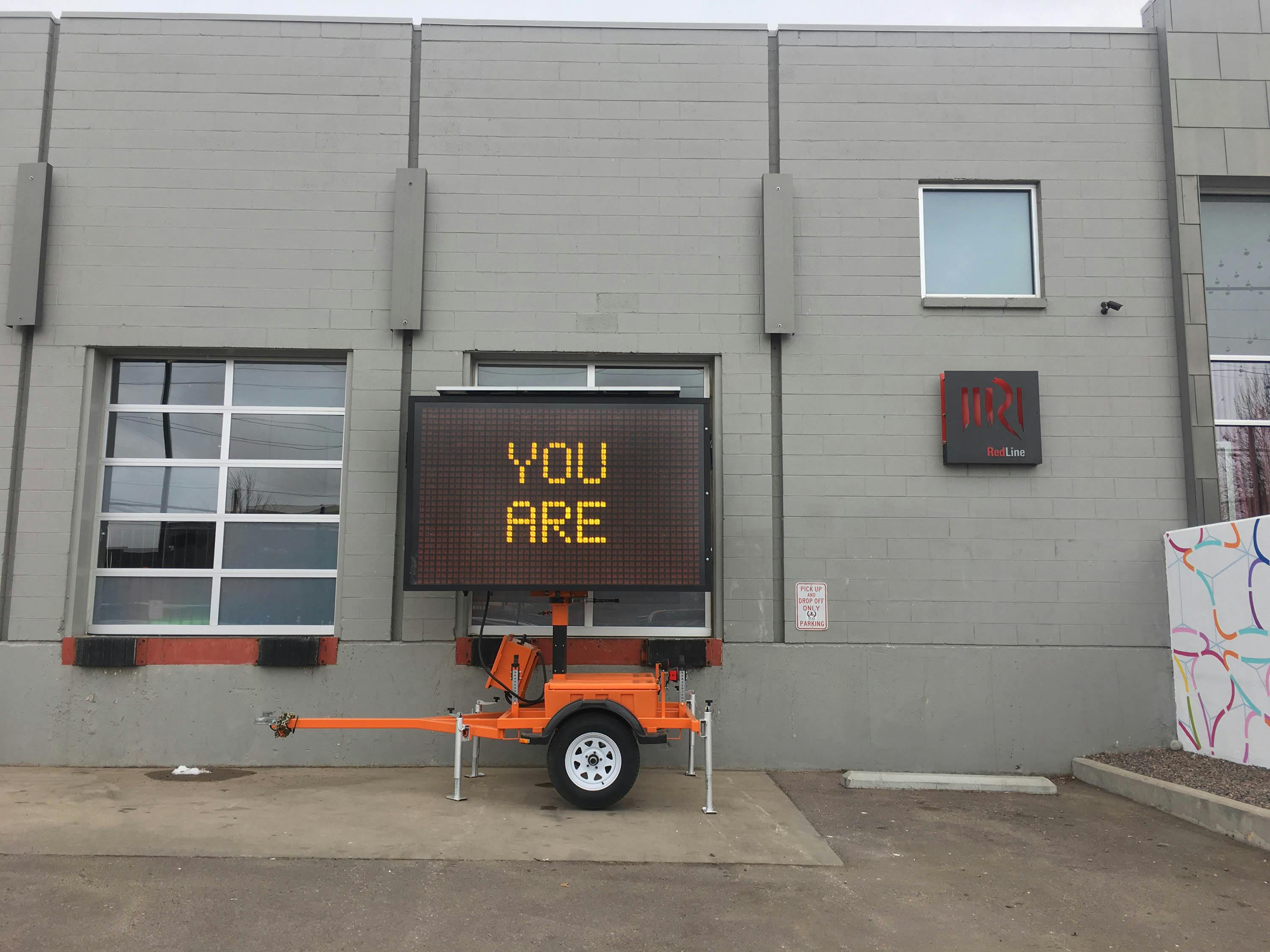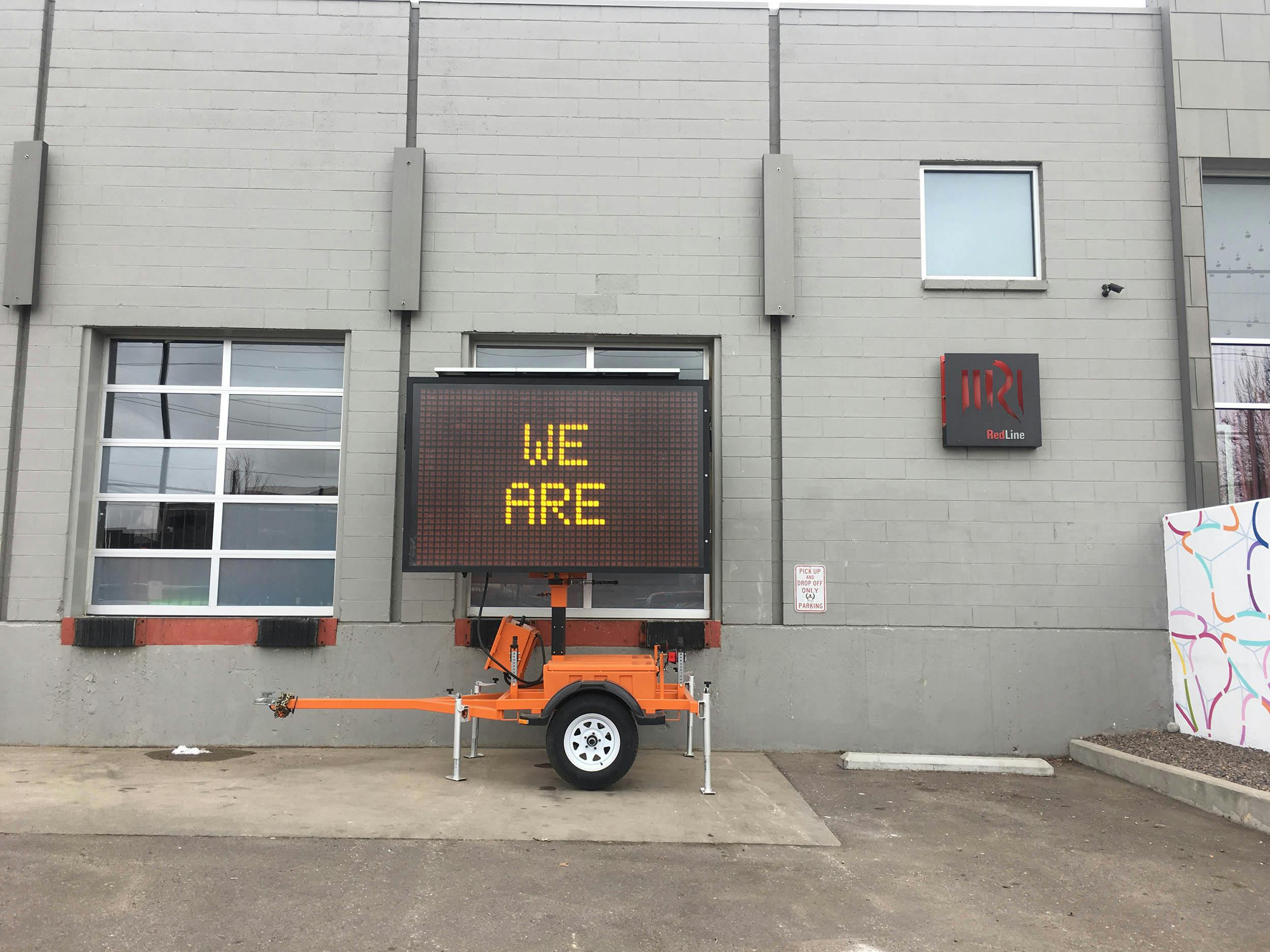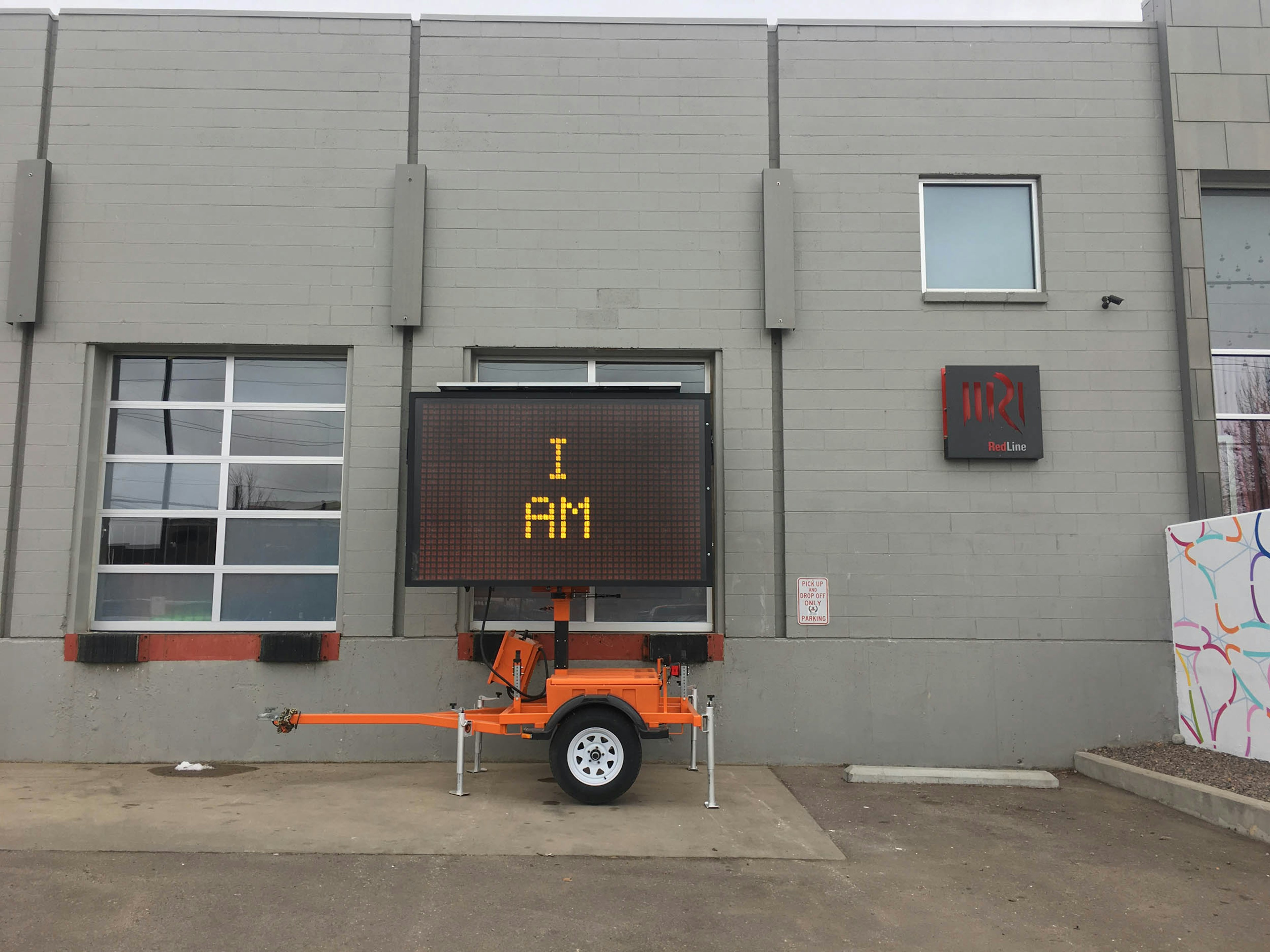Joel Swanson on Conjugation of Being




Black Cube’s Curatorial Intern, Stephanie Edwards, interviewed 2017 Artist Fellow, Joel Swanson, on his Alumni Project Conjugation of Being.
Joel Swanson on Conjugation of Being
Stephanie Edwards: Welcome Joel, it is a pleasure to speak with you again for Black Cube’s blog. Black Cube is producing your new work, Conjugation of Being, as an alumni project. This text-based artwork displays rotating statements with different conjugations of the verb “to be” on a construction traffic sign. During your time as a Black Cube Fellow you created a piece for Personal Structures, an approved satellite exhibition at the Venice Biennale. How did your experience as a Black Cube Fellow influence Conjugation of Being?
Joel Swanson: Being in Venice made me think on a larger scale. So much of the artwork in the Venice Biennale is big (literally and figuratively) and that got me thinking about ways that I could take my interest in language into different venues and vernaculars.
I’ve always been fascinated by traffic signs (every time I am stopped in traffic I make videos on my phone of these blinking road signs). They are a symbol — perhaps a symptom — of urban life and car culture, but they also make me think of the ways that power and control is exercised on people in direct ways.
SE: The work that you made for Personal Structures was constructed out of neon that you chose to fabricate in Venice. You are currently in a residency program in Banff, Canada. Is Conjugation of Being something that you prepared long distance as well? If so, can you talk about the logistical aspect of producing work remotely and how your experience as a Black Cube Fellow prepared you to work this way?
JS: I started planning this piece back in the Fall while in Denver. I met with the sign rental company and then tested my text on the sign. There are certain limitations of the sign software, which I had to work with, including limited font options, as well as a limited number of messages that can be pre-programmed. I always look at the limitations within technologies as opportunities for creativity. I find it easier to be creative within parameters and limitations. And yes, I’m currently at an art residency in Banff (current temp 1 degree Fahrenheit), so I programmed the sign remotely.
SE: In a statement about Conjugation of Being you mentioned both public signage and Martin Heidegger’s Introduction to Metaphysics as influences. Can you describe how these seemingly disparate influences converge in this piece?
JS: “Introduction to Metaphysics” is this phenomenal text that asks the seemingly simple question, “Why are there Beings instead of nothing.” In this book, Heidegger interrogates this question philosophically and linguistically. He is specifically focused on the verb “being” as this complicated, problematic, yet fundamental verb. I resonate with work that opens up seemingly simple things to show their innate complexity. I wanted to explore conjugated statements with the verb “to be” in a traffic sign because it creates this indistinct speaker/subject. Who is saying “I AM” and who is the “WE” referring to? The sign references authority and anonymity at the same time.
SE: This piece will premier as a part of RedLine’s 10x - 10th Anniversary Retrospective Resident Artist Exhibition. Do you see a connection between using a traffic message board as a material for this piece and the relationship between RedLine and the RiNo/Five Points neighborhood where it is located?
JS: I live in RiNo/Five Points neighborhood and have witnessed drastic changes over the past five years. There is so much construction and gentrification. It is affecting residents as well as artistic and cultural institutions. It is impossible to drive through the neighborhood without being detoured by one of these construction signs. For the last year I’ve been tempted to “hijack” one of these signs and turn into an enigmatic artwork that makes people question the roles that these signs play in directing our bodies and patterns of movement. I am thrilled that RedLine and Black Cube gave me this opportunity.
SE: You have had a lot of significant opportunities in the Denver area in the last few years between your representation at David B. Smith Gallery, solo exhibition at MCA Denver, and being both a RedLine and Black Cube alumni. What would your advice be to other artists about how to create a sustainable artistic practice in Denver?
JS: This past week the Denver art community lost one of our own, and this loss is a reminder to focus on what is truly important. Getting shows, commission, and grants is great, but fundamentally being an artist is about being part of a community. It is the people, and the joy of making artwork itself that has to be central to any successful artistic practice. Denver has such a strong art community and I am so proud to be a part of it.
In terms of getting work shown, we have to understand the art world isn’t fair. You could have the most amazing work ever, but that doesn’t mean that curators and gallerists will see it and decide to show it. So you have to take advantage of every opportunity that comes your way. You have to place yourself in situations where you can make connections. You have to promote yourself and your work. As an introvert, I hate this part of being an artist, but if you don’t push to get your work shown, nobody is going to do it for you. Some tips:
- Become a part of the art community. Go to openings. Meet other artists. Meet curators. Meet gallery owners. Be a nice person. Be genuine.
- Get a studio. I realize that getting a studio is cost prohibitive for many (especially in today’s economy), but if you can swing it get a studio space. A studio space that isn’t your bedroom communicates that you take yourself seriously as an artist. And if you can, become part of a studio collective, which helps with point number one.
- “Pitch” your practice. At openings and other events you will be asked to describe your practice in a few sentences, so develop a concise elevator pitch of your work, then practice it.
- Get on Instagram. It is a great way to get connected to the larger art world, and get your practice out there. Follow artists you love and galleries where you want to show. It is amazing that we can a sense of what is going on in the art world internationally on our phones.
- Develop rituals around your practice. Artists get rejected—a lot. It is important to understand that getting rejected means that you are putting yourself out there. I know some people who keep every rejection letter as an archive of their practice. Whenever I get a rejection that particularly stings, I treat myself to a fancy martini (vodka, dry with a twist). I call them #rejectiontinis. It is a silly practice, but it reminds me that getting rejected is part of being an artist, and is worth celebrating.
